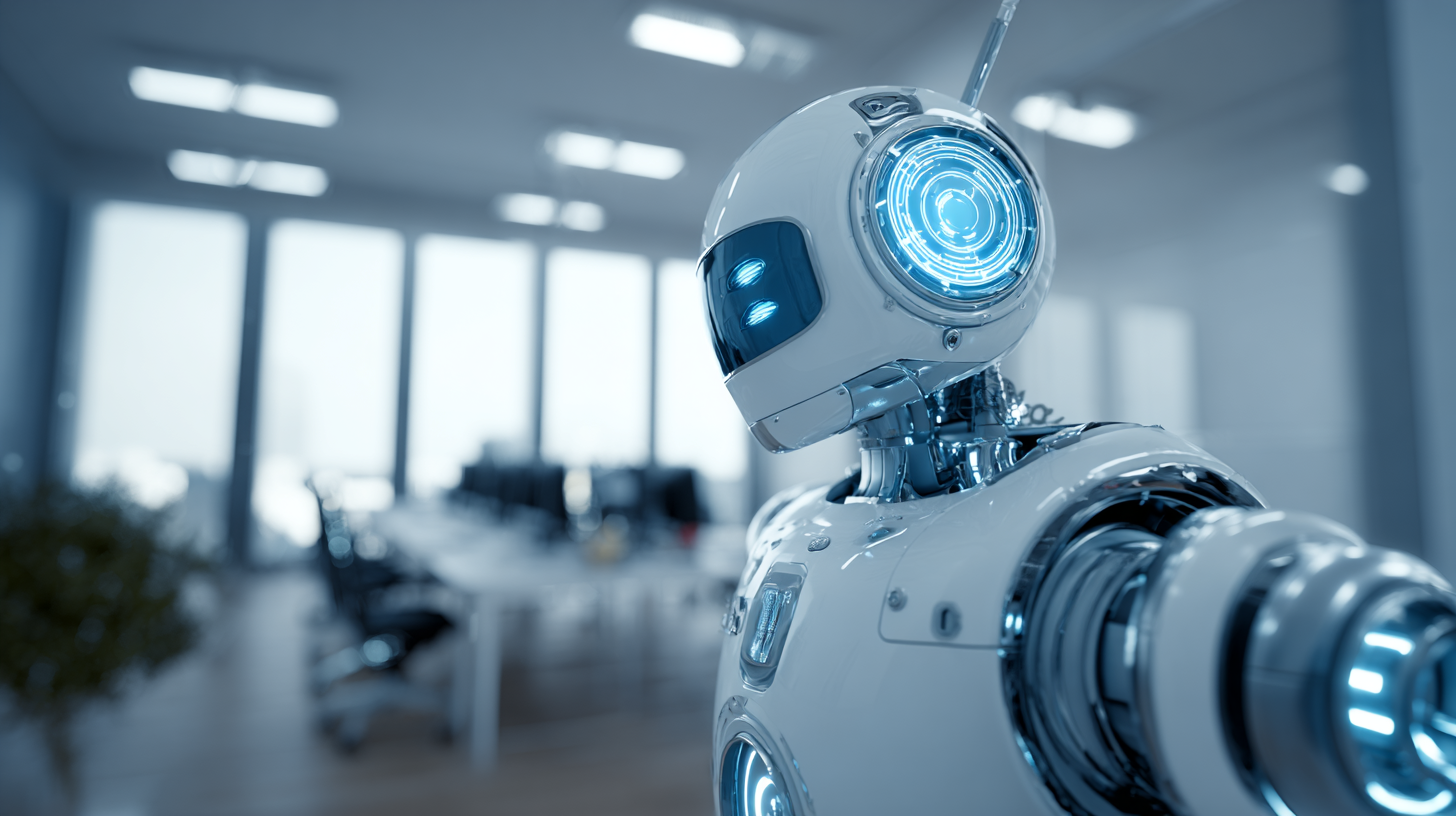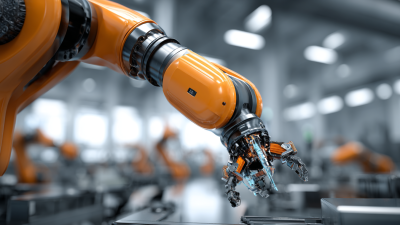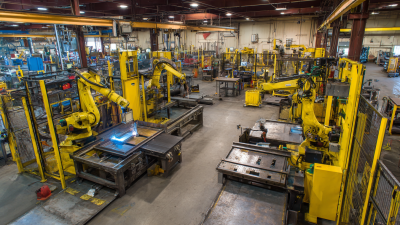Exploring the Future of Work with Robotic Automation Solutions
As industries continue to evolve in the face of rapid technological advancements, robotic automation solutions are increasingly being recognized as a key driver of efficiency and productivity in the modern workforce. According to a report by McKinsey, automation could increase global productivity by 0.8 to 1.4 percent annually, potentially adding $1.2 trillion to the economy by 2030. Furthermore, a Gartner study predicts that by 2025, 50% of organizations will have adopted intelligent automation in their operations.

This shift signifies not only a transformation in operational capabilities but also a redefinition of the workplace landscape, where humans and robots collaborate to enhance performance and innovation. In this exploration of the future of work, we will delve into the implications of adopting robotic automation solutions and how they are shaping a new paradigm that blends digital technologies and human ingenuity.
The Rise of Robotic Automation in Modern Workplaces
The rise of robotic automation in modern workplaces is revolutionizing the way organizations operate, enhancing productivity, and transforming job roles. With the integration of advanced robotics and artificial intelligence, businesses are increasingly automating repetitive and mundane tasks previously handled by human workers. This shift not only allows for greater efficiency but also enables employees to focus on higher-value activities that require critical thinking and creativity.

As robotic solutions become more sophisticated, their applications span various industries, from manufacturing to healthcare. In manufacturing, for instance, robots are used for assembly line work, ensuring consistent quality and output. In healthcare, robotic systems assist in surgeries and patient care, reducing the workload on healthcare professionals while improving patient outcomes. This wave of automation is not just about replacing human labor; it represents an opportunity for workers to upskill and take on new responsibilities, thereby fostering a culture of continuous improvement and innovation in the workplace.
Key Benefits of Implementing Robotic Solutions in Business Operations
The integration of robotic automation solutions in business operations is transforming the way companies function, providing numerous key benefits. According to a report by McKinsey & Company, automation could increase productivity by up to 1.4% annually, significantly enhancing operational efficiency. Robotic solutions streamline processes by taking over repetitive tasks, allowing human workers to focus on more strategic activities. This shift not only boosts workforce morale but also leads to higher job satisfaction as employees can engage in more meaningful work.
Furthermore, a study by the International Federation of Robotics reveals that businesses implementing robotic solutions have seen a reduction in operational costs by up to 30%. This cost efficiency is a critical factor as it enables organizations to remain competitive in an increasingly dynamic market. Additionally, automated systems can operate 24/7, enhancing throughput and ensuring that business processes remain uninterrupted. As companies continue to adapt to technological advancements, the adoption of robotic automation will not just be a trend, but a fundamental shift shaping the future landscape of work.
Exploring the Future of Work with Robotic Automation Solutions - Key Benefits of Implementing Robotic Solutions in Business Operations
| Benefit | Description | Impact | Implementation Time |
|---|---|---|---|
| Increased Efficiency | Robotic solutions automate repetitive tasks, allowing employees to focus on higher-value work. | Higher productivity and faster turnaround times. | 1-3 months |
| Cost Reduction | Lower operational costs through reduced labor expenses and increased process efficiency. | Improved profit margins. | 1-6 months |
| Enhanced Quality | Robots perform tasks with precision, resulting in fewer errors. | Higher customer satisfaction and compliance rates. | 2-4 months |
| Scalability | Robotic systems can be easily scaled to handle increased workloads. | Flexibility to adapt to market demands. | 3-6 months |
| Employee Satisfaction | Automation relieves employees from mundane tasks, increasing job satisfaction. | Improved retention rates. | Ongoing |
Challenges and Considerations in Adopting Robotic Automation
The adoption of robotic automation solutions presents significant challenges and considerations that organizations must navigate carefully. One major challenge is the initial investment required for implementing these technologies. Companies need to evaluate the long-term return on investment, which can be uncertain, especially for smaller firms lacking extensive capital. Additionally, the integration of automation into existing workflows often necessitates a reevaluation of processes, requiring time and resources that can distract from core business activities.
Another critical consideration is the potential impact on the workforce. While robotic automation can increase efficiency and reduce labor costs, it may also lead to job displacement for certain roles. Organizations must balance the benefits of automation with the responsibility to their employees, which can involve retraining programs and new role development. Furthermore, fostering a culture that embraces technological change is essential for smooth transitions, as employee resistance can hinder automation efforts. Ensuring clear communication regarding the benefits and objectives of robotic automation is vital for gaining buy-in from all stakeholders involved.

Future Trends: How Robotics Will Shape Job Roles and Employment
The future of work is poised for a significant transformation driven by advancements in robotic automation solutions. As industries adopt these technologies, job roles are expected to change dramatically. Automation will take over repetitive and mundane tasks, freeing up human workers to focus on more complex and creative responsibilities. This shift not only enhances productivity but also fosters a work environment that prioritizes innovation.
Moreover, the integration of robotics will reshape the employment landscape by introducing new job opportunities that focus on managing, programming, and maintaining these automated systems. Roles will evolve to require a blend of technical skills and critical thinking, enabling workers to collaborate effectively with machines. As we embrace this future, it is crucial for both employees and employers to adapt by investing in skill development and re-evaluating job designs to fully harness the benefits of robotic automation.
Integrating Robotics with Human Workforce: A Collaborative Approach
The integration of robotics within the human workforce represents a transformative shift in how we approach work. This collaborative approach leverages the strengths of both humans and machines, where robotics excel in precision, efficiency, and repetitive tasks, while humans provide creativity, problem-solving abilities, and emotional intelligence. By fostering a synergy between automation and human workers, organizations can create a more adaptable environment that not only enhances productivity but also empowers employees.
As businesses begin to implement robotic automation solutions, it’s essential to prioritize training and upskilling for the human workforce. This ensures that employees are equipped to work alongside robots, managing and interpreting the output of automated systems. Emphasizing collaboration over replacement can alleviate fears surrounding job displacement and encourage a culture of innovation. In this dynamic workplace, both robots and humans can thrive, driving progress and cultivating an ecosystem where technology and human talent are intertwined for mutual benefit.
Exploring the Future of Work: Robotic Automation vs Human Workforce Integration
This chart illustrates the projected growth in the adoption of robotic automation solutions alongside the human workforce from 2023 to 2028. The data reflects trends in industries such as manufacturing, logistics, and customer service where both robotics and human workers will collaborate more closely.


